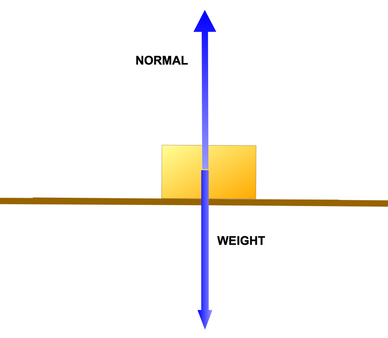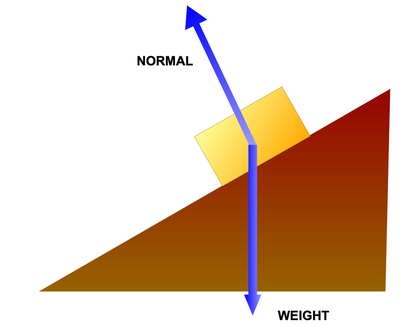When an a box rests on a horizontal surface, the earth is applying a force on to the box (its weight)
However, the surface is also applying a force to that box, resulting with a net force of zero, according to the first law.
This force referred to as the Normal force.
This is often referred to as the surface reaction force
However, the surface is also applying a force to that box, resulting with a net force of zero, according to the first law.
This force referred to as the Normal force.
This is often referred to as the surface reaction force
[IMPORTANT: this is NOT an example of Newton's third Law, which is about an forces applied mutually on two objects (in this case the box and the surface)
In the case above we have TWO forces acting on the same box.]
In the case above we have TWO forces acting on the same box.]
|
But what if the surface is an incline, in other words, not perpendicular to the weight force? The video examines the normal force and it's relationship to the incline. As yuou will see, its an application of Newton's Second Law |
|
Interactive
Have a play with the following interactive. Ignore the friction for the moment (leave the coefficient to zero), until you have reviewed friction in the next lesson
Have a play with the following interactive. Ignore the friction for the moment (leave the coefficient to zero), until you have reviewed friction in the next lesson
Check out also this pHET interactive
At this stage this will only work on computers and not iPads
At this stage this will only work on computers and not iPads
Sample Problem
We are now ready to try a sample problem
Below is a sample problem with a video that explain how to solve it. It is suggested you try the problem beforehand, as this actually aids understanding, even if you are unsure if you are correct.
We are now ready to try a sample problem
Below is a sample problem with a video that explain how to solve it. It is suggested you try the problem beforehand, as this actually aids understanding, even if you are unsure if you are correct.



